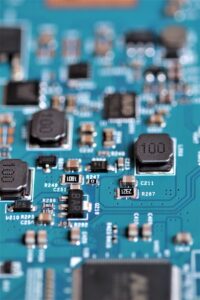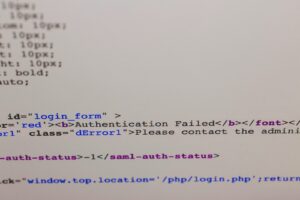The Critical Role of Anonymization in IoT Security
Understanding the Importance of Anonymizing IoT Device Identifiers
The anonymization of IoT device identifiers plays a critical role in this context, ensuring that personal data associated with these devices cannot be easily traced back to individual users. In regions like Saudi Arabia and the UAE, where smart cities are flourishing, and IoT adoption is accelerating, the importance of this practice cannot be overstated. Anonymization techniques are essential for protecting users from potential privacy breaches, making it a cornerstone of modern IoT security strategies.
Why Anonymization Matters for User Privacy
Anonymization is the process of removing or altering personal identifiers from data sets, making it impossible to link data back to an individual without additional information. In the context of IoT, device identifiers such as MAC addresses, IP addresses, and device-specific IDs can inadvertently expose user identity and activity patterns if left unprotected. This risk is particularly significant in smart cities like Riyadh and Dubai, where IoT devices are deeply integrated into public services and everyday life. By anonymizing these identifiers, organizations can mitigate the risk of unauthorized access to sensitive information, thus preserving user privacy and building trust in IoT technologies.
Challenges in Achieving Effective Anonymization
While the benefits of anonymization are clear, achieving it effectively in IoT environments presents several challenges. IoT devices often generate vast amounts of data, and ensuring that every piece of information is properly anonymized without compromising the functionality of the system can be complex. Additionally, the need to balance privacy with the usability and efficiency of IoT services can create tension, particularly in high-tech regions like the UAE and Saudi Arabia. To overcome these challenges, organizations must implement robust anonymization techniques and continuously monitor their effectiveness, adapting to new threats and vulnerabilities as they emerge.
Techniques and Best Practices for Anonymizing IoT Device Identifiers
Techniques for Effective Anonymization in IoT
Several techniques can be employed to anonymize IoT device identifiers effectively. One common method is the use of pseudonymization, where identifiers are replaced with pseudonyms that do not directly reveal the user’s identity. This approach maintains the utility of the data while protecting user privacy. Another technique is data aggregation, where data from multiple devices are combined in a way that individual identifiers are no longer distinguishable. This method is particularly useful in environments like smart cities, where large volumes of data are generated. Additionally, differential privacy techniques, which add noise to the data, can further enhance privacy protection without significantly impacting data accuracy.
The Role of Blockchain in Enhancing Anonymization
Blockchain technology can also play a significant role in enhancing the anonymization of IoT device identifiers. By utilizing decentralized and immutable ledgers, blockchain can provide a secure framework for storing anonymized data. Each transaction or data exchange within the IoT network can be recorded on the blockchain, ensuring that no single entity has complete control over the data. This decentralization makes it more difficult for malicious actors to trace back the data to individual users. In regions like Dubai and Riyadh, where blockchain is being explored for various applications, its integration with IoT systems could significantly strengthen privacy protections.
Best Practices for Implementing Anonymization
To implement anonymization effectively, organizations should follow best practices that align with both legal requirements and industry standards. Firstly, a comprehensive data inventory should be maintained, identifying all data points that could potentially reveal user identities. Regular audits and updates to the anonymization process are also essential, ensuring that new vulnerabilities are addressed promptly. Organizations should also consider adopting privacy-by-design principles, where anonymization is integrated into the IoT system from the ground up rather than as an afterthought. Additionally, collaborating with experts in AI and machine learning can help organizations stay ahead of emerging privacy threats, particularly in fast-paced environments like the UAE and Saudi Arabia.
Conclusion: The Future of Privacy Protection in IoT
As IoT continues to permeate every aspect of modern life, ensuring the privacy of users through effective anonymization techniques is more critical than ever. The anonymization of IoT device identifiers is not just a technical challenge but a fundamental aspect of maintaining trust in the digital age. By adopting robust anonymization methods, leveraging technologies like blockchain, and following industry best practices, organizations can protect user privacy while enabling the continued growth and innovation of IoT systems.
In regions like Saudi Arabia and the UAE, where technological advancement is a key driver of economic and social progress, the importance of privacy protection cannot be overstated. As these nations continue to lead in the adoption of IoT technologies, ensuring that privacy safeguards keep pace with innovation will be crucial in building a secure and trusted digital ecosystem. By prioritizing the anonymization of IoT device identifiers, organizations can contribute to a future where the benefits of IoT are realized without compromising the privacy and security of individuals.
—
#Anonymization #IoTSecurity #PrivacyProtection #AIinSecurity #Blockchain #GenerativeAI #BusinessSuccess #LeadershipInTech #IoTinSaudiArabia #IoTinUAE #RiyadhTech #DubaiTech













